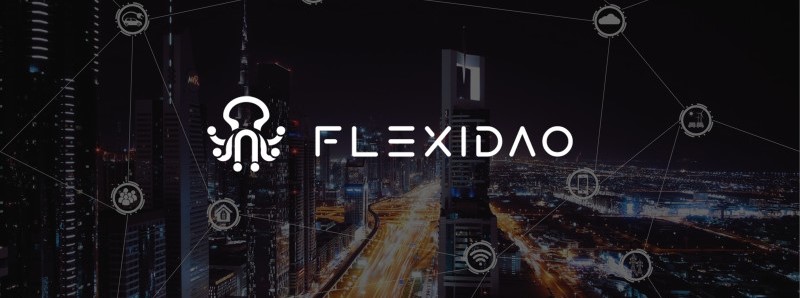“For the first time in history, consumers really have a choice and can influence the energy market with their purchase decisions.” – Simone Accornero
The blockchain in the energy market is growing fast, with startups and established companies filling the space. From peer-to-peer energy trading to green energy certification, blockchain could provide the technological base for a wide range of applications. The Barcelona-based startup FlexiDao has set out to change the industry by providing blockchain-based energy certificates.
“Enabling a digitalized, green energy future” – that’s FlexiDao’s promise. The startup works on a blockchain-based certification system for renewable energy retailers which tracks the source of energy production in real time. The Blockchain Land writer, Lukas J. Hofer, spoke with FlexiDao’s CEO Simone Accornero about the company’s value proposition, how the startup uses blockchain technology, its challenges and the future of the blockchain in the energy market.
Thank you for joining us today. In a nutshell, how does FlexiDao work?
At the very core, FlexiDao helps energy retailers to provide transparency and enhance trust towards their consumers, by proving the source of their energy. Today, energy consumers often don’t know whether the “green” energy they buy is truly green because the current certification mechanism is inadequate. It allows certification only once per year, with very poor metrics in terms of location and time. FlexiDao provides a Software-as-a-Service to energy retailers that tracks and certifies energy production in real time and allows them to provide more transparency to the end users.
Which energy retailers do you work with?
Large energy corporations are our early adopters. In Spain, we have contracts with Acciona and Iberdrola. We are also preparing a pilot with Germany-based E.ON. In the long term, we are planning to connect prosumers as well. Currently, energy certification is almost impossible for prosumers, because it’s too expensive for them to get certified. With our system, there will be no problem, as long as we can get access to their metering data.
I imagine energy corporations appreciate the marketing benefits of green energy certificates.
Energy retailers across the board are looking for ways to diversify. They face challenges in the current market environment, because the market is crowded, and it has become difficult to compete for price. With our system, they can become a green energy partner. Our customers can use our certification when negotiating green energy contracts with the end user, to enhance trust and customer confidence. It also helps them to achieve their Corporate and Social Responsibility goals.
What do end consumers think about your approach?
FlexiDao empowers the end user to choose which kind of energy they want. Energy greenwashing is a frequent problem in energy markets. You think you are buying green energy, but in reality, the retailer is just buying green energy certificates from Norway.
Thus, our system will empower the consumer, because they will know where the energy was produced, when it was produced and by whom. For the first time in history, consumers really have a choice and can influence the energy market with their purchase decisions.
How do you make use of blockchain technology?
We don’t build our own blockchain. We work on the application layer. Our services run on the Energy Web Blockchain, which is developed by the Energy Web Foundation. It’s permissioned for the authorities and permissionless for the users. That means everybody can join the network, but only the authorities can validate the transactions. And we are one of those authorities, together with our customers.
And you are using smart contracts.
We use a lot of smart contracts. At the very core, our system receives the data from the meter. This information is then being sent to the blockchain, where we create a certificate. This certificate is essentially a token which belongs to the generator. On the other hand, we also gather energy consumption data. Our smart contract then matches the certificate with these consumption data and automatically transfers the certificate to the appropriate user. All those transactions are recorded on the blockchain. Thus, the blockchain becomes a digital notary.
What are your main challenges and how do you overcome those challenges?
On the business side, our primary challenge is regulations around the certificates. Energy certification is highly regulated in Europe. There can only be one certification mechanism per country, which is determined by the country of origin. Thus, we need to be careful not to step on the regulators’ toes. Instead, we are trying to have an open dialogue and explain how technology could help them.
Are EU regulators cooperative?
The EU is very advanced. European regulators have been discussing the topic already for a long time. In October they released a whitepaper on GDPR and blockchain which we use as guidance. I once had the chance to pitch our project to DG Connect, which is the European body that regulates everything around IT and new technologies. They were very perceptive and showed a lot of interest in collaborating with innovative European startups like us.
Scalability is an often-discussed issue in the blockchain in the energy market.
We worry about scalability, but we don’t consider it as our main challenge for large scale adoption. Our key challenge on the tech side is the user experience. It needs to be as easy as possible.
Our users don’t need usernames and passwords, they just need a private key. The private key is stored at the user’s premises. But then we have to educate our users. What is a private key? How does it work? For example, the issue was: What happens if a user loses the private key? We had to come up with an entire system to recover a customer’s account in case a private key gets lost.
Educating the user is an issue many startups struggle with. How do you educate the user?
There have been many projects that misinform the user and create misconceptions about blockchain technology. That’s not helpful. We have to go through an education process with each of our customers and explain how the system works and why it is useful. On the side of the end user, we are experimenting with different user interfaces and different interactions like writing blogs and providing as much documentation and guidance as possible. We try to be consultants, not only technology providers. But it’s a long process.
What is FlexiDao’s plan for the future?
We are focusing on Europe at the moment, but in 2019 we will expand to Chile. We see huge potential in South America, because there has been a significant boost in the renewable energies markets and because regulations there are less strict.
What’s your take on the future of the blockchain in the energy market?
I believe our certification mechanism will be the first widely adopted use case. Everyone in the current energy sector recognizes that certification is an issue, so it really solves a problem. Also, the technology behind it is not very complicated. After that, I think wholesale trading and electric mobility also provide promising use cases. There is also massive value in billing, but most energy retailers are too dependent on SAP, and that will be very difficult to change.
You have not mentioned P2P energy trading.
I think there will be more pilot projects, but I don’t think something at scale will happen within the next five years. The technology is not ripe yet.
What’s the background story of FlexiDao? How did you come up with the idea?
Our CTO and I studied together. He was already into blockchain at those days. We saw a massive value in decentralization and proposed a research project to our university. We then did a one-year research project in Barcelona. At the end of it, we were looking for funding. We didn’t work on certification at that time, but on a platform for grid operators to manage distributed assets. We realized that this project was not marketable, it was too far away. But we wanted to create something that could provide real value for the people, not just a proof of concept. That’s how the idea of blockchain-based green energy certification and FlexiDao was born.
Amazing. Thanks for the interview, and good luck for the future.
Thanks for having me.
This interview was conducted through the phone. It has been edited for brevity and clarity.





Hi, Neat post. There’s a problem with your website in internet explorer, may test this? IE still is the market leader and a huge part of other people will leave out your great writing because of this problem.
My brother recommended I would possibly like this website. He was totally right. This post truly made my day. You can not believe just how so much time I had spent for this info! Thanks!
I do trust all the ideas you’ve presented to your post. They’re really convincing and can certainly work. Still, the posts are too brief for novices. May you please extend them a little from subsequent time? Thanks for the post.
To the theblockchainland.com webmaster, Your posts are always well-written and engaging.
I have recently started a website, the info you offer on this website has helped me greatly. Thank you for all of your time & work.
A person essentially help to make seriously posts I would state. This is the first time I frequented your website page and thus far? I surprised with the research you made to create this particular publish extraordinary. Wonderful job!
Thanks for the ideas you have provided here. On top of that, I believe there are numerous factors that keep your car insurance policy premium decrease. One is, to take into consideration buying motors that are inside good listing of car insurance businesses. Cars which have been expensive tend to be more at risk of being snatched. Aside from that insurance is also in accordance with the value of your vehicle, so the more pricey it is, then the higher your premium you make payment for.
Aw, this was a really nice post. Taking the time and actual effort to generate atop notch article? but what can I say? I put things offa lot and don’t manage to get nearly anything done.Here is my blog post: ebmelectronics.com
Whats up! I just wish to give an enormous thumbs up for the good data you’ve gotten right here on this post. I might be coming again to your weblog for more soon.
Some really select content on this website , saved to fav.